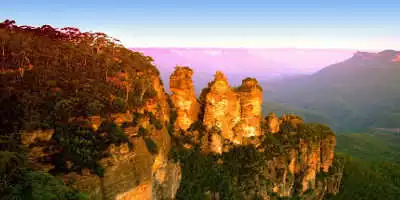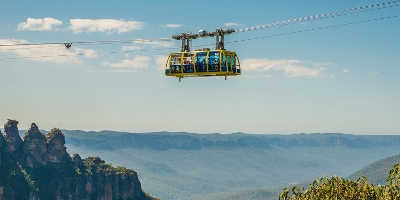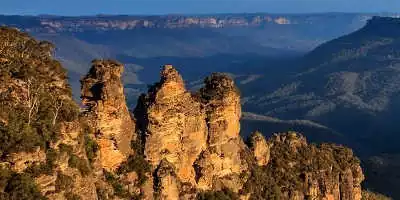
Why are the Blue Mountains World Heritage Listed?
Written by: Cameron Ward
Published: 05/05/2020
Reading time: 3 mins
This spectacular region close to Sydney is recognised by UNESCO as World Heritage. So, what makes this region worthy of such an internationally important accolade?
With its lush forest, spectacular viewpoints and impressive mountain scenery, it’s no wonder that the Blue Mountains are a popular travel destination for everyone from international visitors to Sydney locals. Located inland from Sydney, the area offers travellers a range of walking tracks, lookout points, quaint country towns and peaceful waterfalls. Spending a day or two here is an excellent opportunity to enjoy serene natural settings, less than two hours drive from the Sydney centre.
Travellers are not the only ones to appreciate the natural beauty of the Blue Mountains. The Greater Blue Mountains area has been recognised by UNESCO as World Heritage for demonstrating the evolution of eucalypts in Australia after its separation from the Gondwana continent. The World Heritage listing highlights the Blue Mountains environmental importance to Australia and the world and recognises the need to protect and preserve the area for future generations.
What Does World Heritage Listed Mean?
The United Nations Educational, Scientific and Cultural Organisation (UNESCO) classify sites or areas as World Heritage Listed if they are considered to have significant historical, scientific or cultural importance to humanity. The aim is to provide international protections and preserve significant landmarks and natural areas for future generations to appreciate. Australia currently has 20 locations listed for cultural or natural significance including the Great Barrier Reef, Sydney Opera House, Kakadu National Park and Fraser Island. The Greater Blue Mountains Area was added to the list in 2000.
Biological Diversity
The main reason for Blue Mountains listing as World Heritage is for its biological diversity. With close to 100 species of eucalypts, 400 animal species and more new plant and fauna species continuing to be discovered, the Blue Mountains area contains unique and diverse ecosystems that are environmentally significant to Australia and the world. The range of landscapes and infertile soil throughout the tablelands have provided the perfect opportunity for species to adapt and evolve, developing unique characteristics to cope with the environmental conditions of individual microsites. As a result, many endemic, rare and threatened species call the area home, as well as evolutionary relic species.
One important example of these relic species is the Wollemi Pine. The critically endangered coniferous tree was previously only known through fossil records and thought to long be extinct until its accidental discovery in a remote part of the Blue Mountains. Reduced to a population of less than 100 trees, the Wollemi Pine survived in an isolated series of gorges, the location of which remains a secret to the public. Because of its historical and environmental importance, there have been significant efforts to protect the Wollemi Pine including during the most recent bushfires in the area.
Cultural Significance
Beyond the biological importance of the Blue Mountains, the area also contains significant indigenous cultural values. The traditional owners of the areas of the Blue Mountains include six Aboriginal language groups, and important rock art and engravings can be found throughout the region.
Related article: Aboriginal History in the Blue Mountains








